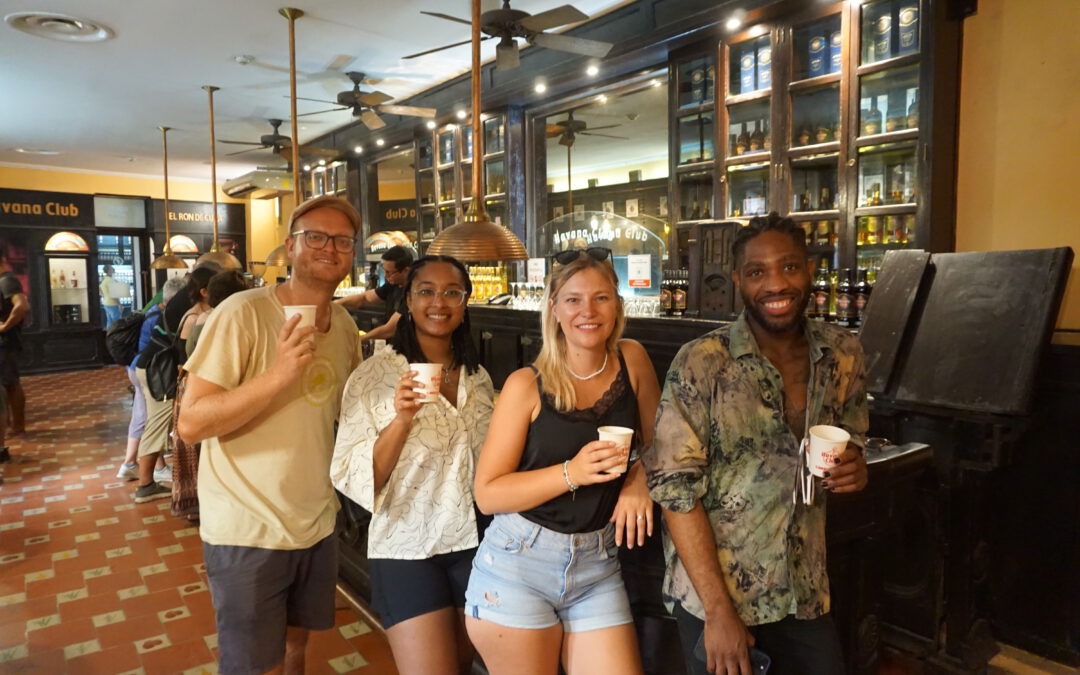When you visit Cuba, you mainly associate it with salsa, music in the street, rum, cigars, old-timers and Cuban joie de vivre, so a romantic image of the country quickly emerges. And of course, all of these things are inseparable from Cuba, so the image does not completely miss the reality and I also had a great time in Cuba because of the delicious cocktails and all the music. And the Cubans were really incredibly friendly – especially when you get to talk to them and learn about the country’s severe economic crisis and how the people are doing. That is just as much a part of the reality of life for the Cubans.
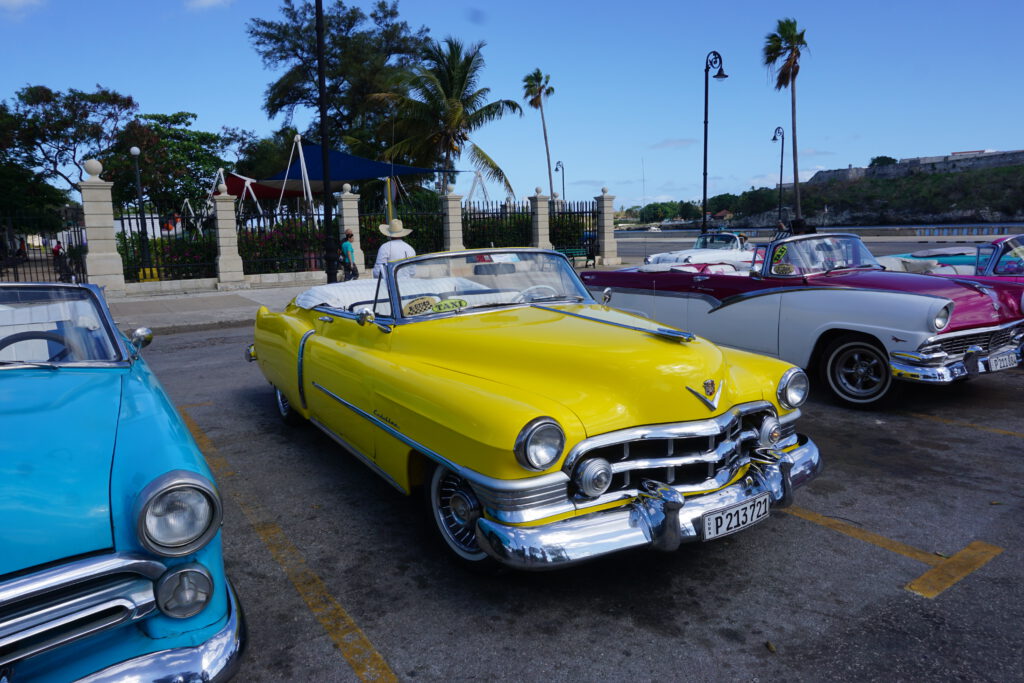
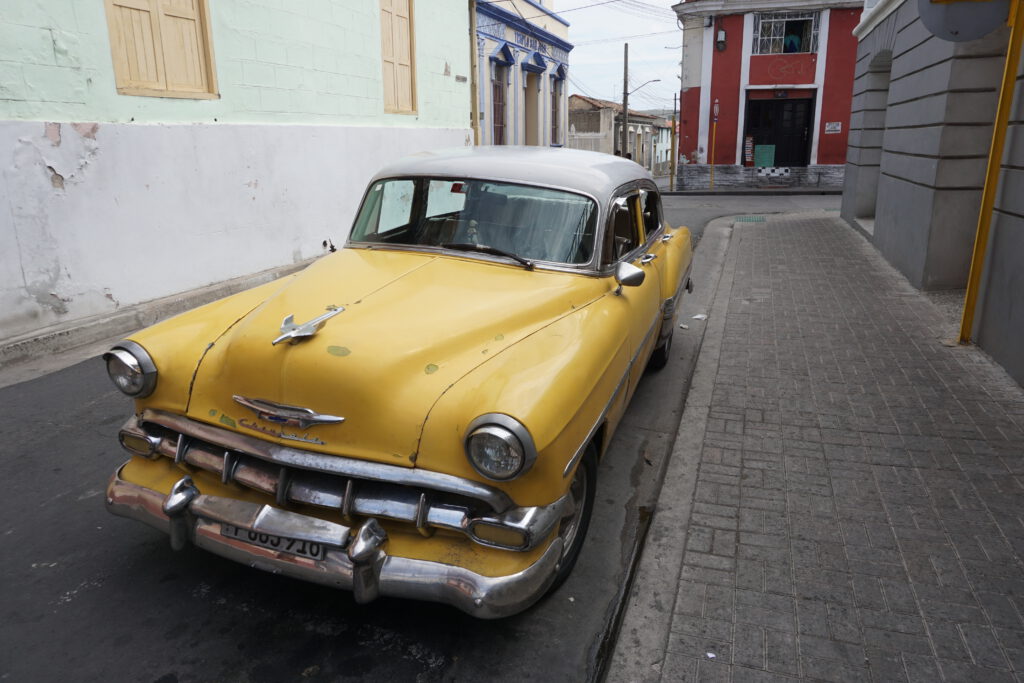
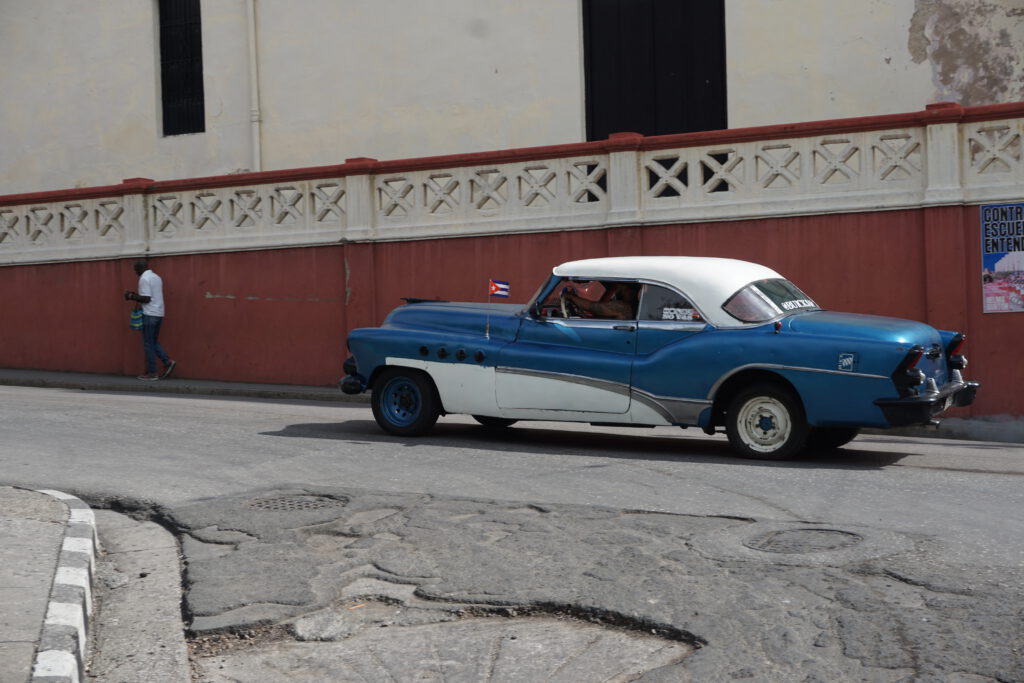
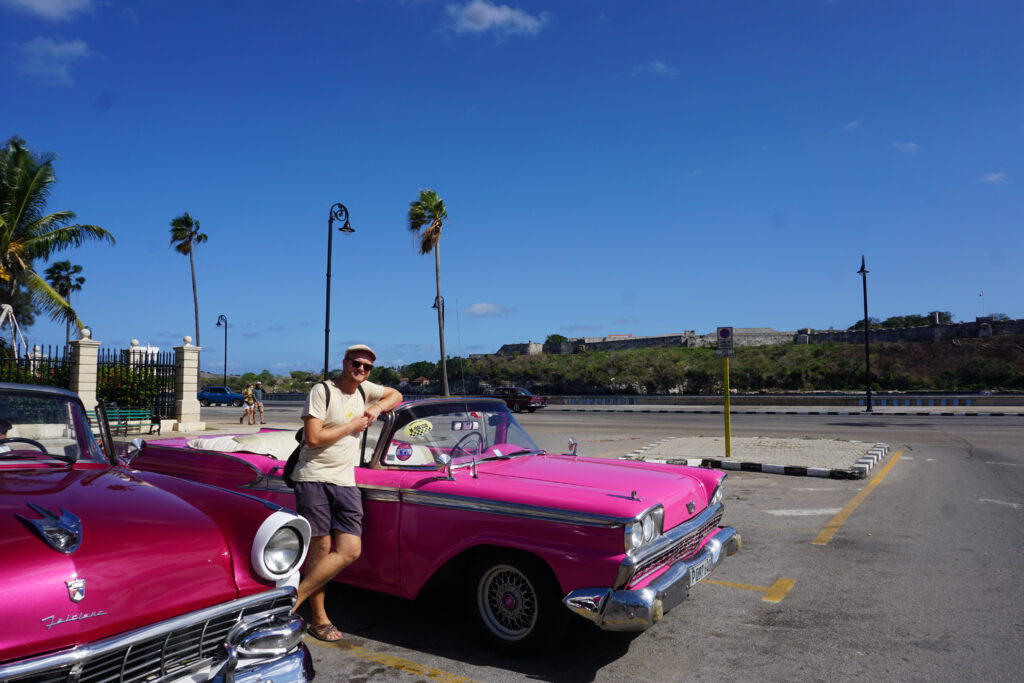
First, I describe how the people are currently doing, what I have seen and experienced, and then later I try to show a little bit of what has led to the current situation in Cuba through an insight into history.
I got a first idea of the situation in Cuba before I arrived in Santiago de Cuba in the south-east of the country. I had written to some hosts on Couchsurfing beforehand and got more answers than usual. But most of them wrote that they were not allowed to host travellers. In Cuba, only those who officially register a hostel are allowed to do so. So I was only left with a hostel run by a Couchsurfer (really not the idea of Couchsurfing). Shortly before leaving the Dom Rep, I got a message offering accommodation in Santiago. But I had already booked the hostel and didn’t want to get the family into trouble. Margarita (name changed) had replied to me on Couchsurfing and immediately made it clear that she saw me as part of her Cuban family – the family was as hospitable as that sounds and I felt very much at home there, even though I wasn’t staying in their house. Nevertheless, I spent a lot of time with and at their place.
Even before I arrived, Margarita asked me to bring her some things that she doesn’t get in Cuba. These were mainly spices like curry, vegetable broth and bay leaves, but also medical products. I was happy to give her this pleasure and I also took some pencils and balloons for the children in Cuba, as I had read that they were very happy about them and this was indeed the case. Often children arrived and asked for money or sweets, and they were very happy to receive a balloon.
So I travelled to Cuba with about 3 kilos of presents in my luggage and wondered whether I might have problems at the airport. But when I saw the baggage carousel in Cuba, my worries disappeared, because apart from me, there were only Cubans on the plane, each with 3 – 5 huge suitcases. They probably travel to the Dom Rep to bring back things for their families and to sell another part. A way to make money in the crisis.
Cuba and the crisises
But what exactly is the current crisis? I’ll go into the background a bit more below, but in a nutshell, an embargo by the US and other Western countries and dependence on the Soviet Union as a communist partner contributed to Cuba’s severe economic crisis after the collapse of the USSR in the 1990s and its increasing dependence on tourism. Tourism came to a standstill for a long time during the pandemic. As a result, a large part of the income was lost and the next severe economic crisis followed in the last few years.
That it’s not only Margarita who feels this way, that some things are inaccessible to her and her family (they are still relatively well off compared to other Cubans), was something I quickly realised in conversation with the people – especially through my street music. Santiago is the home of the Cuban Son (similar to Salsa) and the melancholic guitar music Trova, so music played a big role there. I was all the more pleased that I got a lot of positive feedback when I went through the streets with my guitar. From hardly any other people is that a greater compliment.
Since Santiago de Cuba is less touristy than other places in the country and I walked more through the side streets than played in the main squares, I got to talk to many Cubans. Many told me the same phrase that stuck with me: “In Cuba we don’t live, we survive”. It is worth mentioning that the region around Santiago in the south-east of the country, far from the capital, is probably the poorest region in Cuba. Hennoch, I observed similar problems in the other places I went to.
Just getting food in Cuba is not that easy, not to mention other everyday things. Since the revolution and the official introduction of communism, Cuba has had the so-called Libretta. By the way, whether Cuba is really (still) a communist country is a subject of much discussion and debate. I would rather describe Cuba as a socialist country, but I don’t claim to be right in any case.
In any case, the Libretta is a small booklet that every family has and with which they can pick up food several times a month at a very cheap price from government distribution points. A pound of rice, for example, currently costs about 7 Cuban pesos – about 4 cents. But you only get a rationed amount of this, which is not enough to get you through the month. The same goes for other food.
To get more food, there are currently the following possibilities: you go shopping at the market or in private shops (these have recently been allowed, before there were only shops run by the state). Then you can pay with Cuban pesos, but often some things are missing and/or you have to queue for hours. If you don’t have the time because you are working or something similar, you can buy the rest of the things in government shops, but there you can only pay with a card. This card contains Convertibles Cubanos (CUC), a new currency created by the government at the beginning of the pandemic. One CUC can be bought with one euro or one dollar, but not with Cuban pesos. Incidentally, it is therefore advisable to take dollars with you to Cuba instead of euros, as they are treated as equivalent.
Since you cannot buy the CUC with Cuban pesos, Cubans have to exchange money with tourists or others. This has created a black market in money: When I withdraw money with my credit card from a Cuban bank, I get about 120 Cuban pesos for one euro. But on the street it’s 170 – 180 Cuban pesos – that’s 50% more.
By the way, there are no credit cards in Cuba, so when Cubans travel (which very few can do), they have to travel with cash.
A really difficult situation and unfortunately partly caused by the government, even though I don’t want to take the USA out of the responsibility at any time.
In Santiago, I ended up spending a day longer than originally thought because I felt so comfortable with Margarita and her family and wanted to watch the semi-finals of the baseball world championship with friends. Unfortunately, Cuba lost badly to the USA, but the semi-final was a surprise. Baseball is the number one national sport in Cuba, as it is in the Dom Rep and Puerto Rico.
Apart from the people and the music, which I liked very much in Santiago, I was especially enthusiastic about the exciting rum museum and a trip with my friend Rauber to the fortress “Castillo del Morro”. I had also met Rauber via Couchsurfing and only found out afterwards that we have a mutual friend in Cologne.
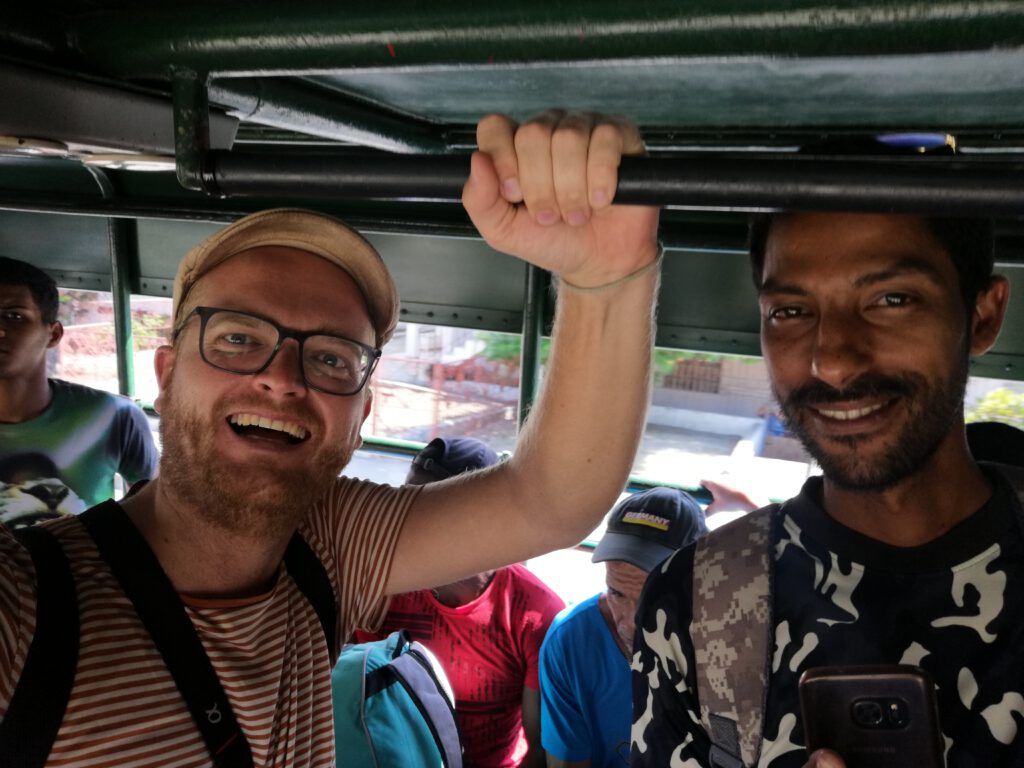
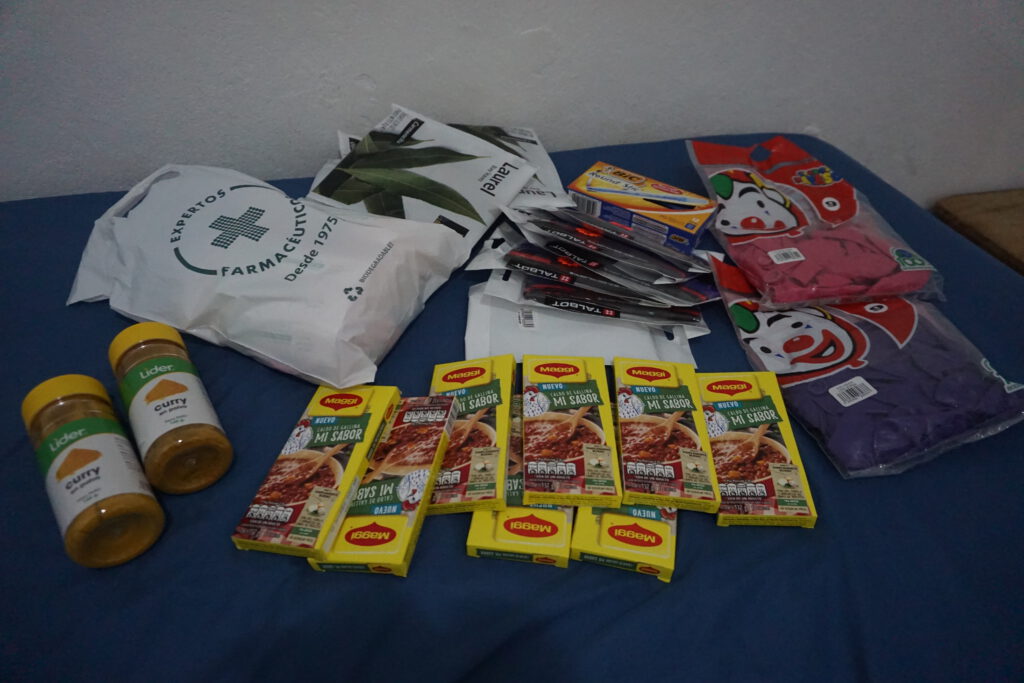
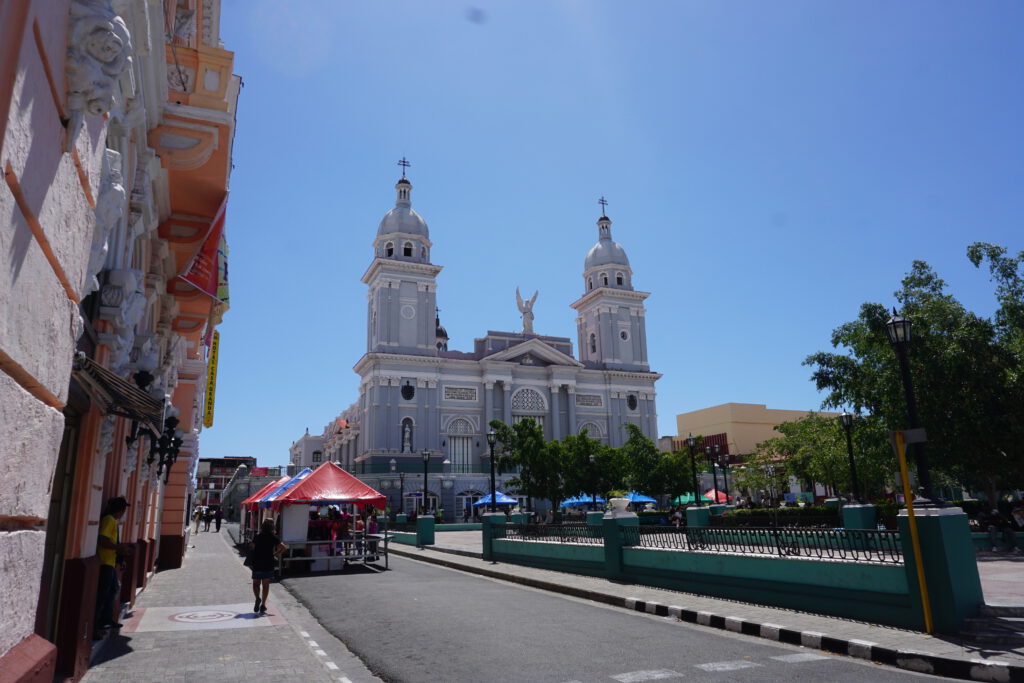
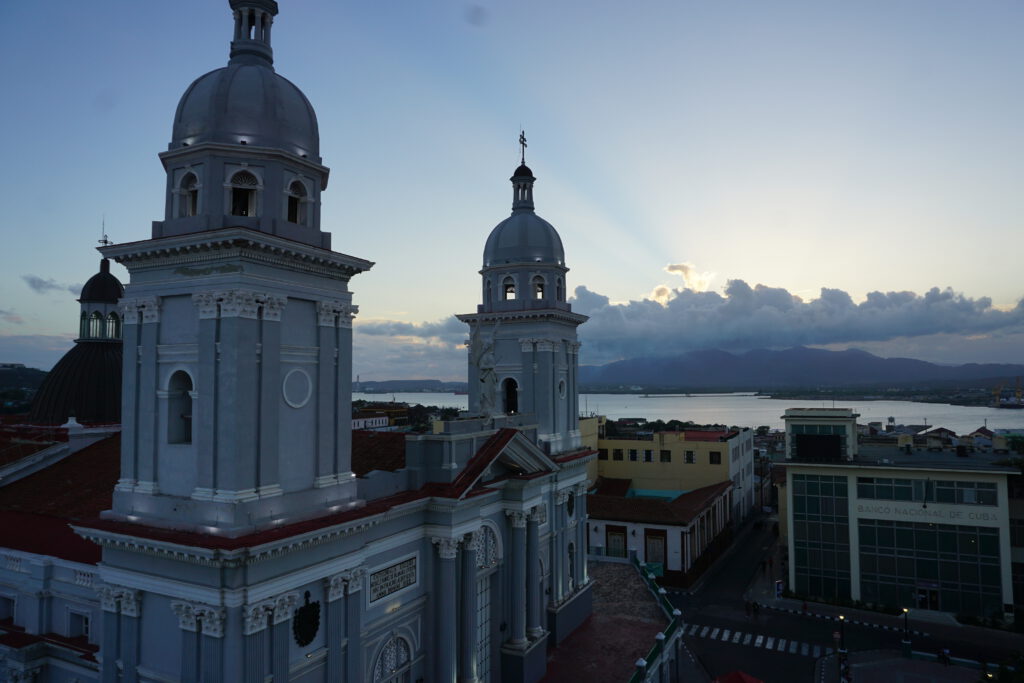
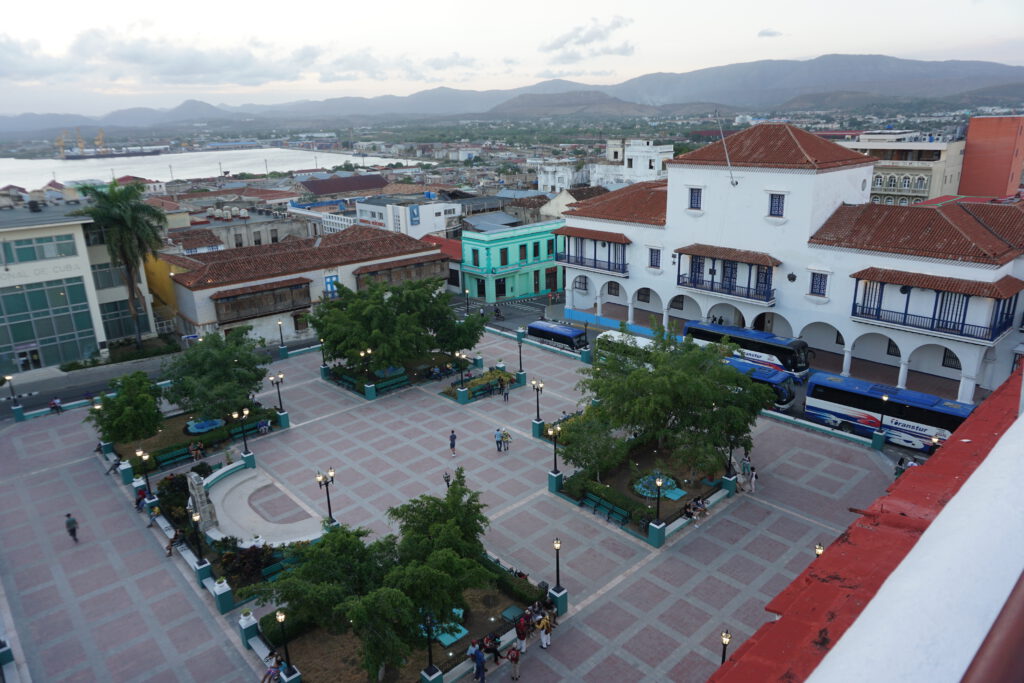
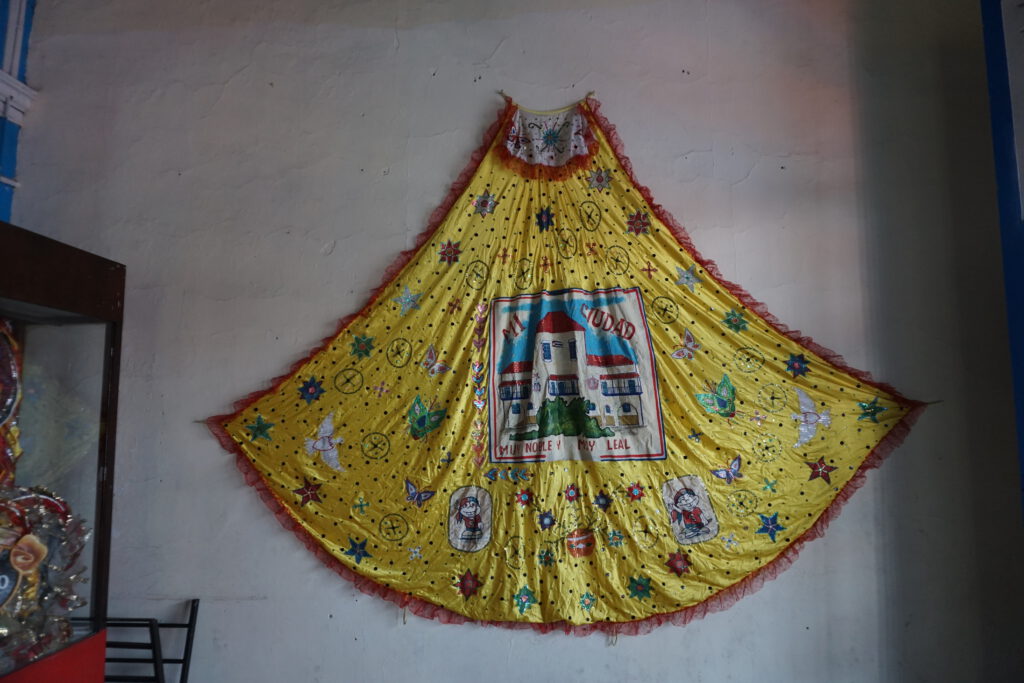
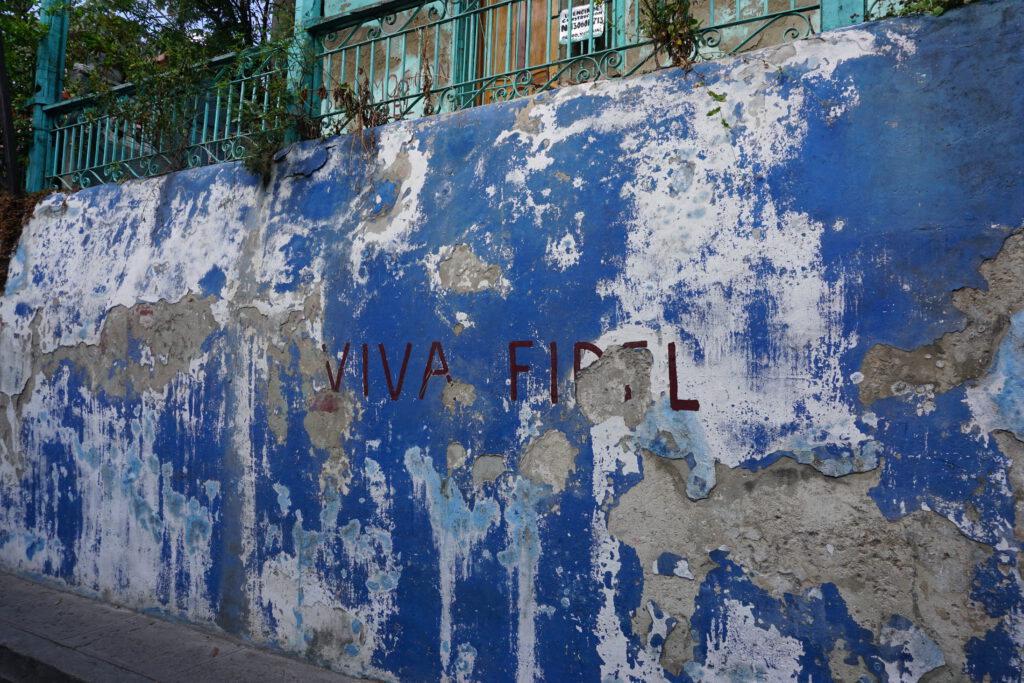
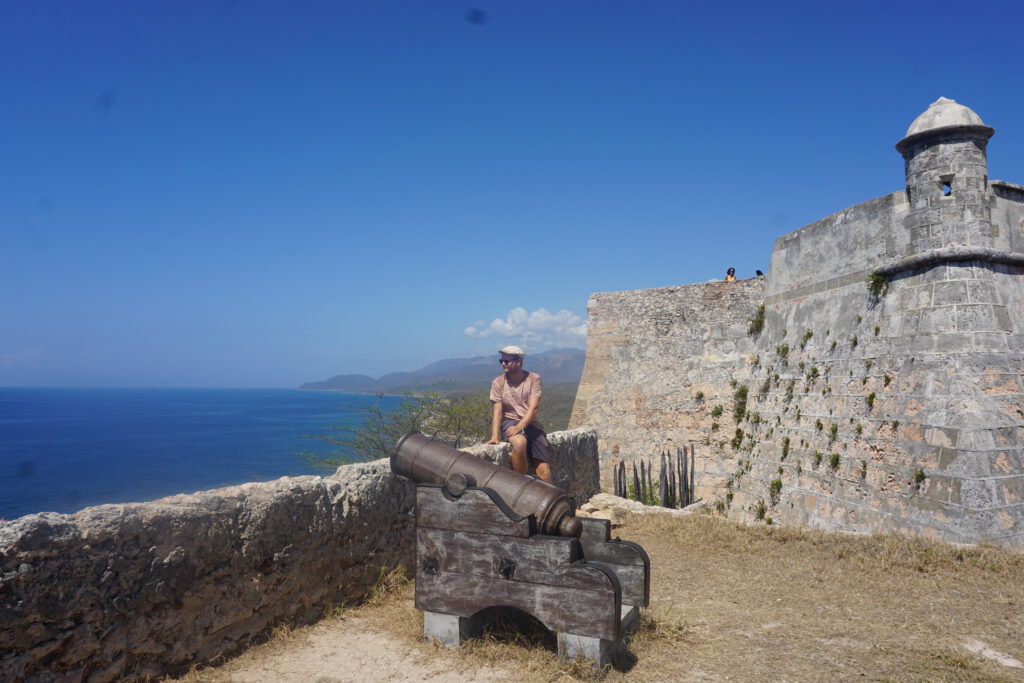
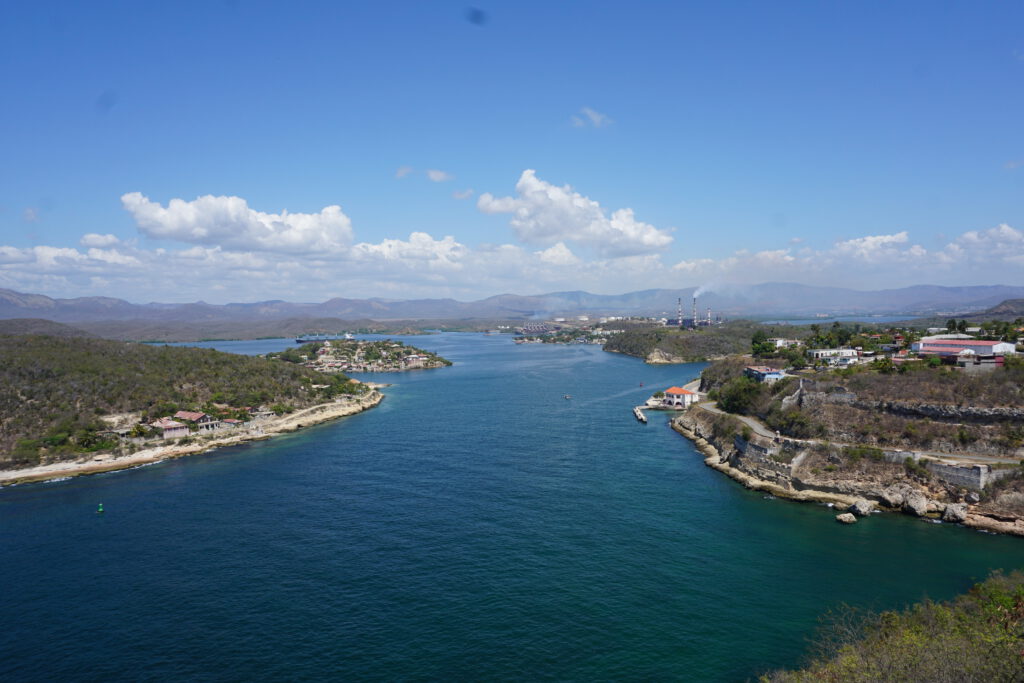
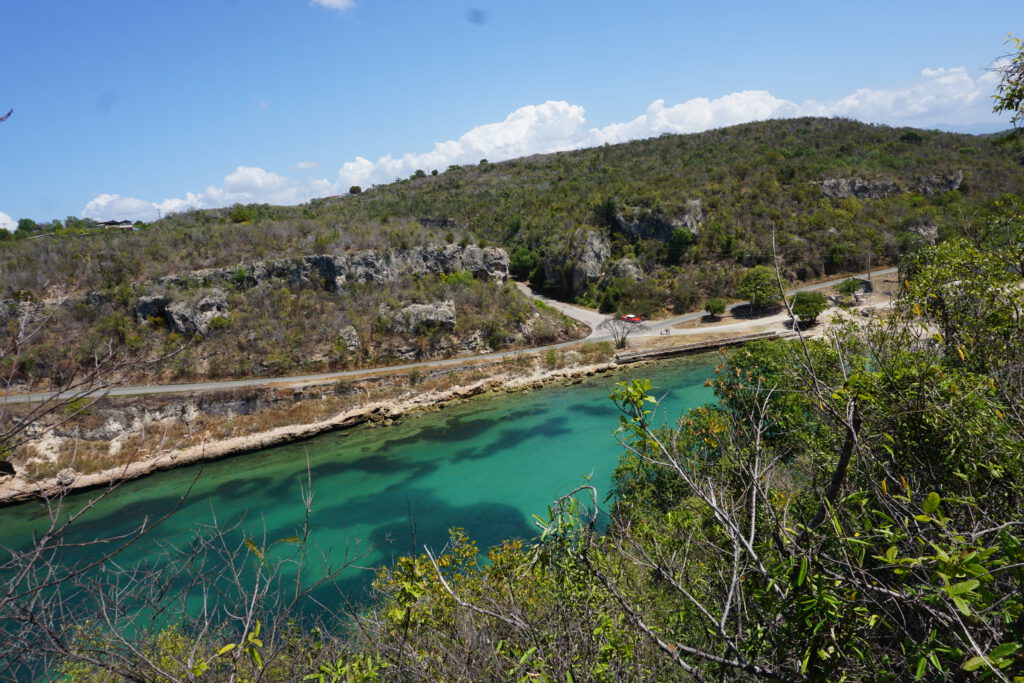
On the way to Havana in the west of the country, I made a stopover in the cities of Sancti Spiritus and Trinidad. In Trinidad, I stayed with a Cuban family again, but this time in their hostel. Trinidad is a classic former colonial town, with beautiful buildings in the centre and a wonderful beach off the coast, which I visited for snorkelling. In the evening, I went to a disco in a cave before continuing on to Havana the next day.
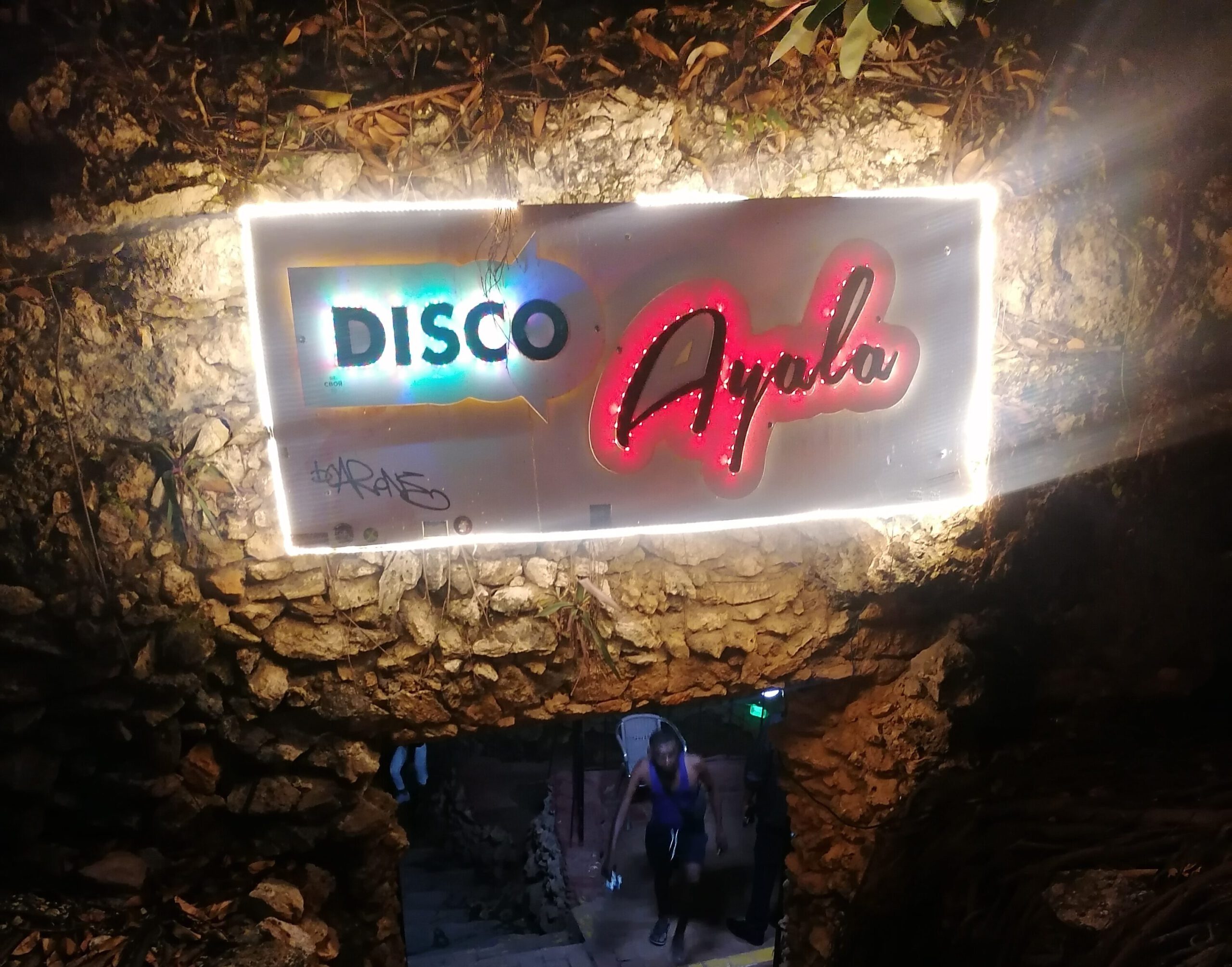
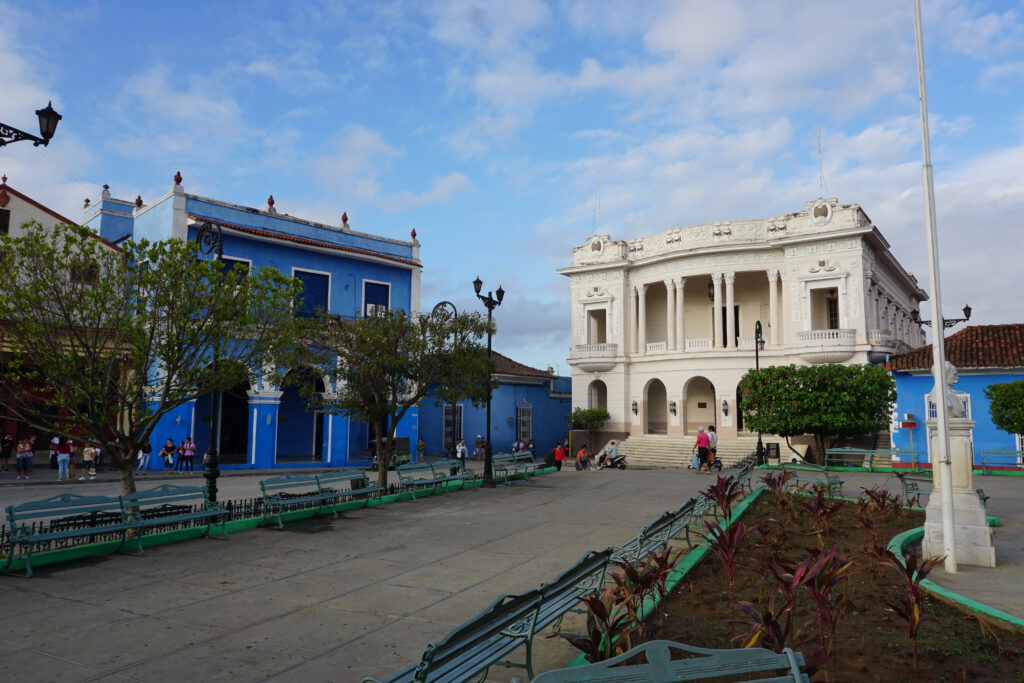
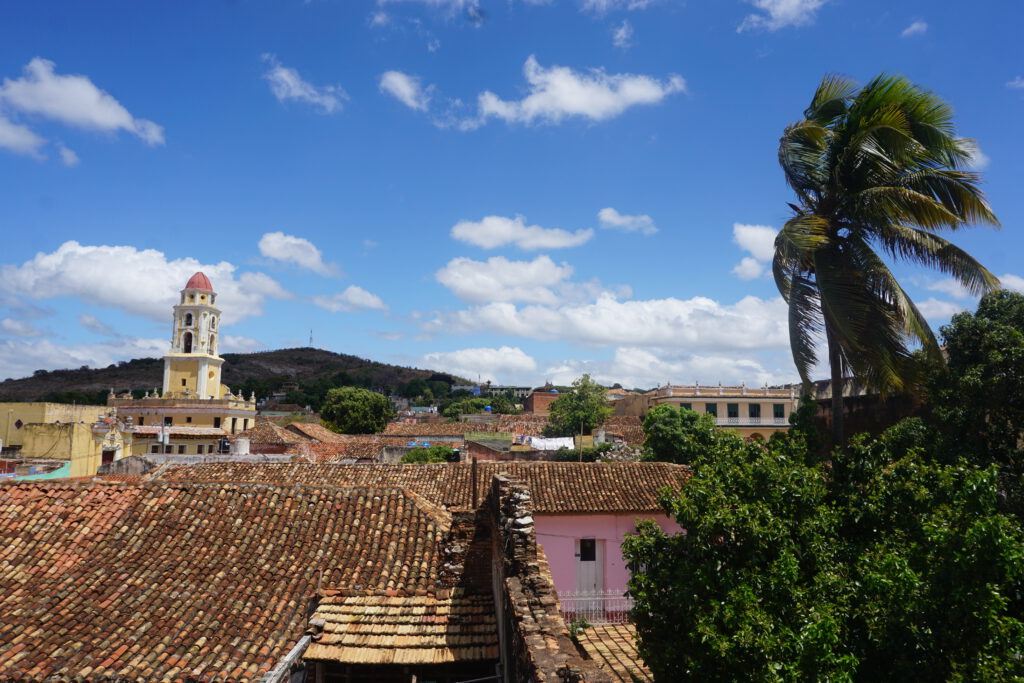
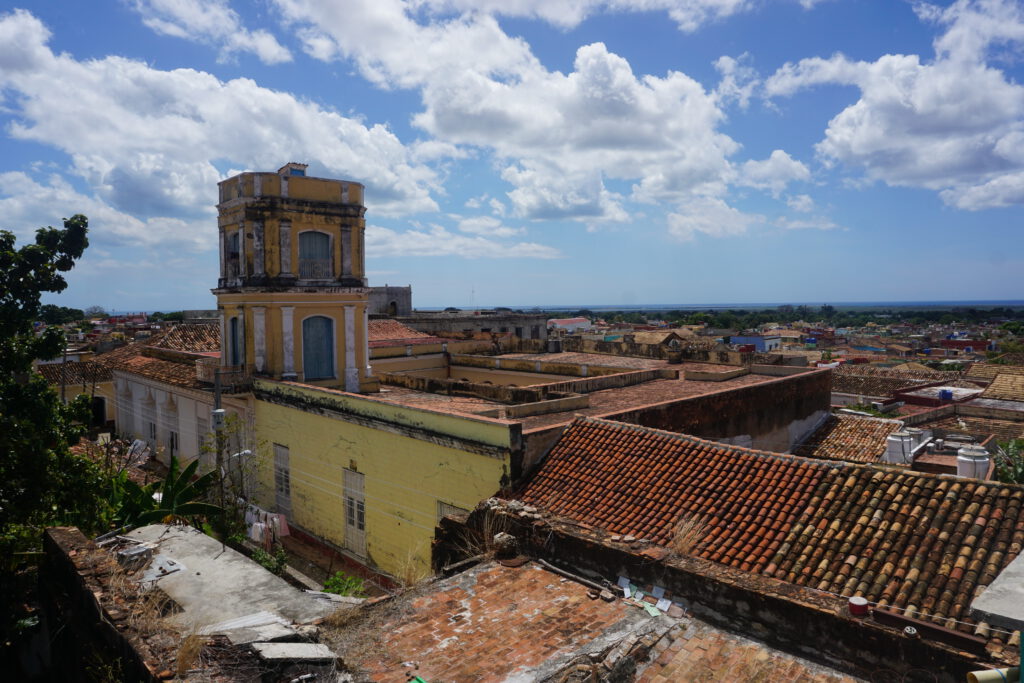
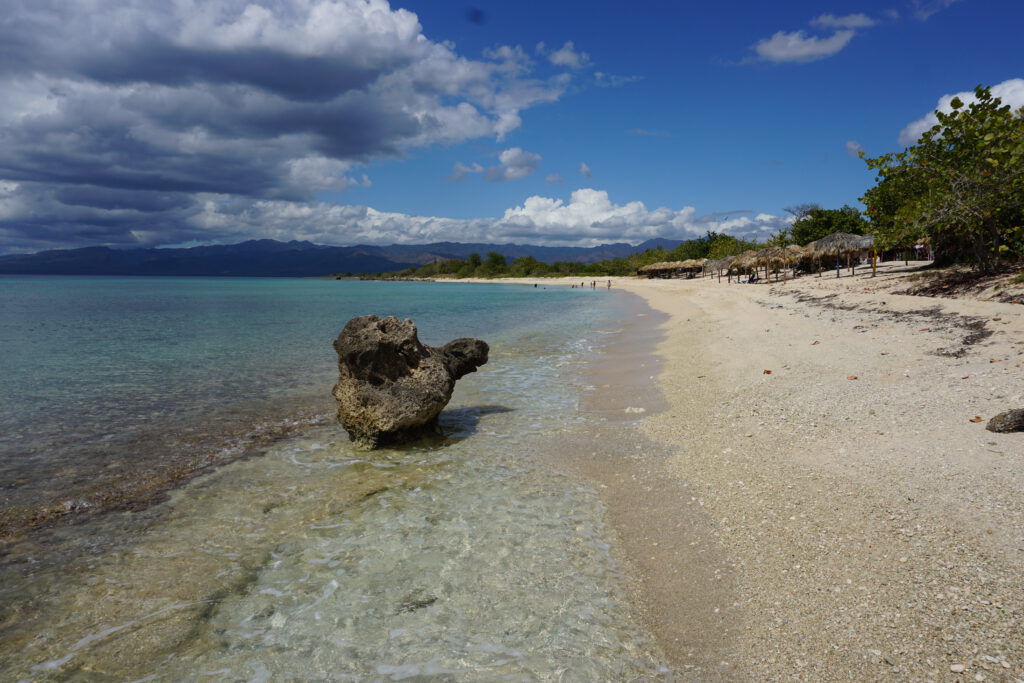
Havanna and Cuban elections
In Havana, I stayed in a hostel for the first time with many other travellers and met cool people with whom I also went on some excursions. In Havana itself, the highlights were again the Havana Rum Museum, the many good cocktails, the huge fortress with a wonderful sunset and the Fabrica de Artes: a large, old factory building that houses several exciting art exhibitions and at the same time opens a disco with several floors and live music in the evening.
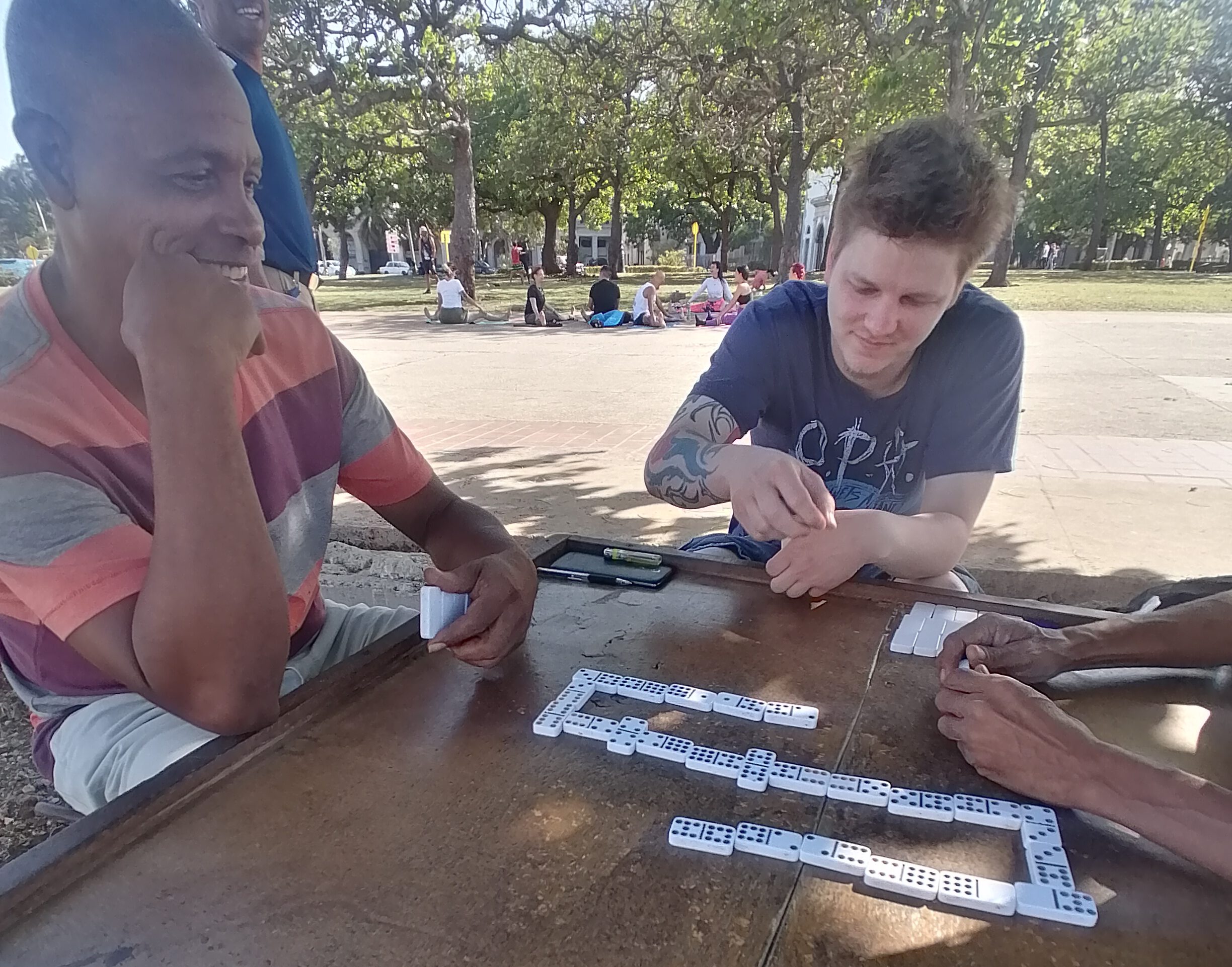
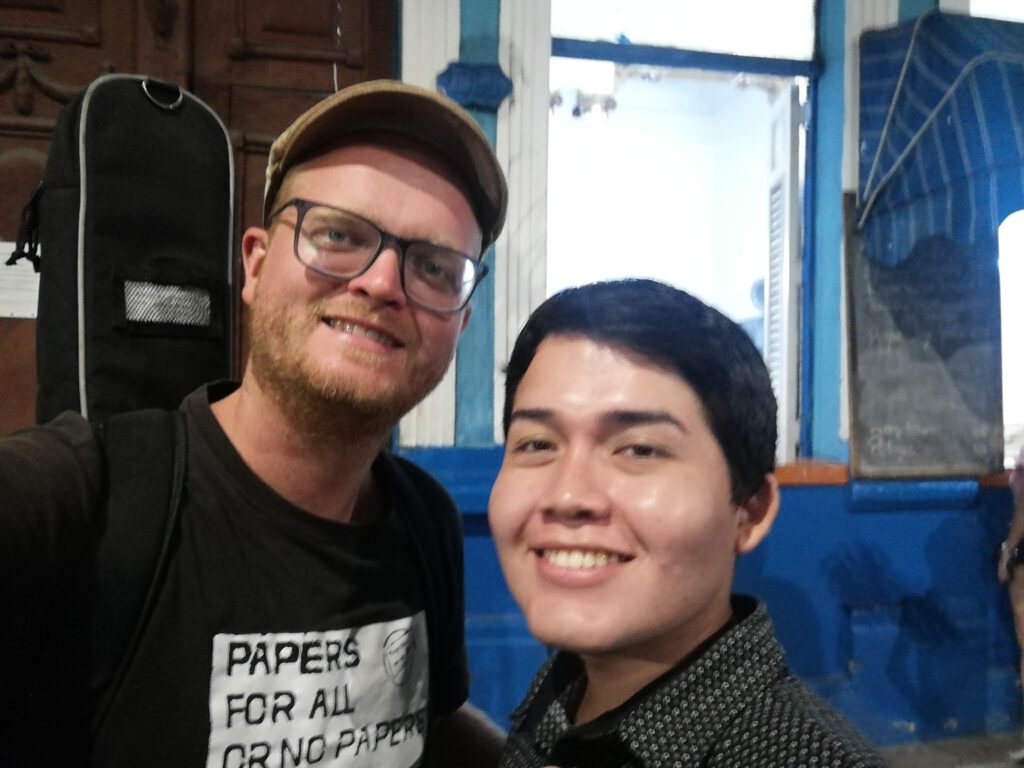
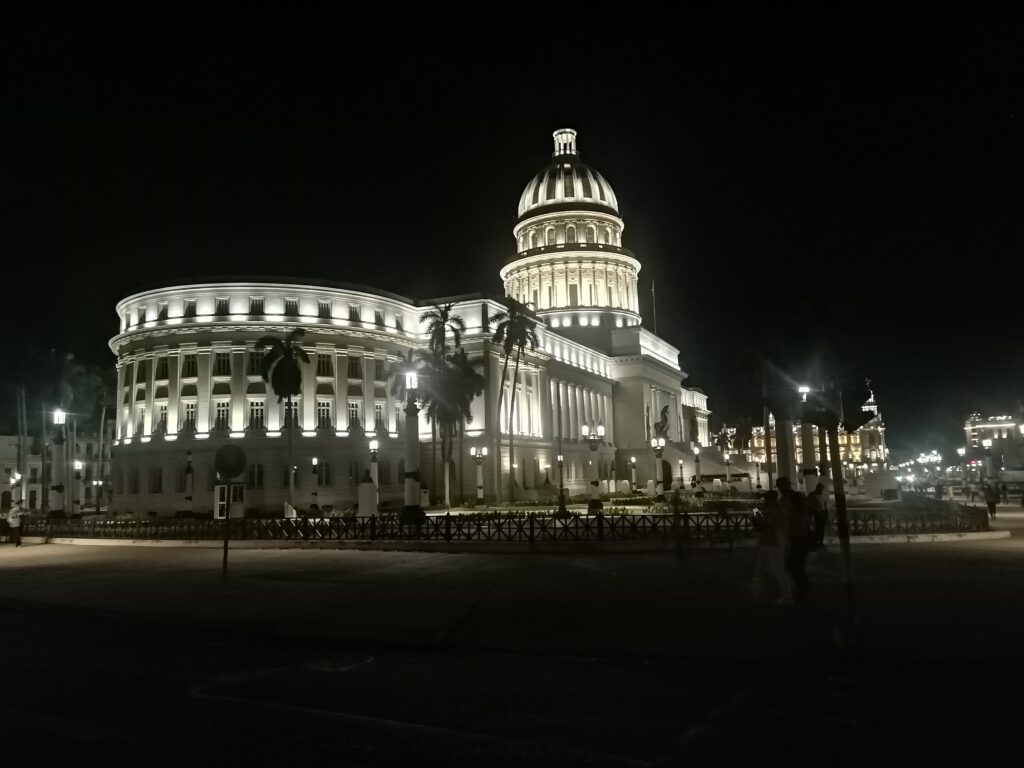

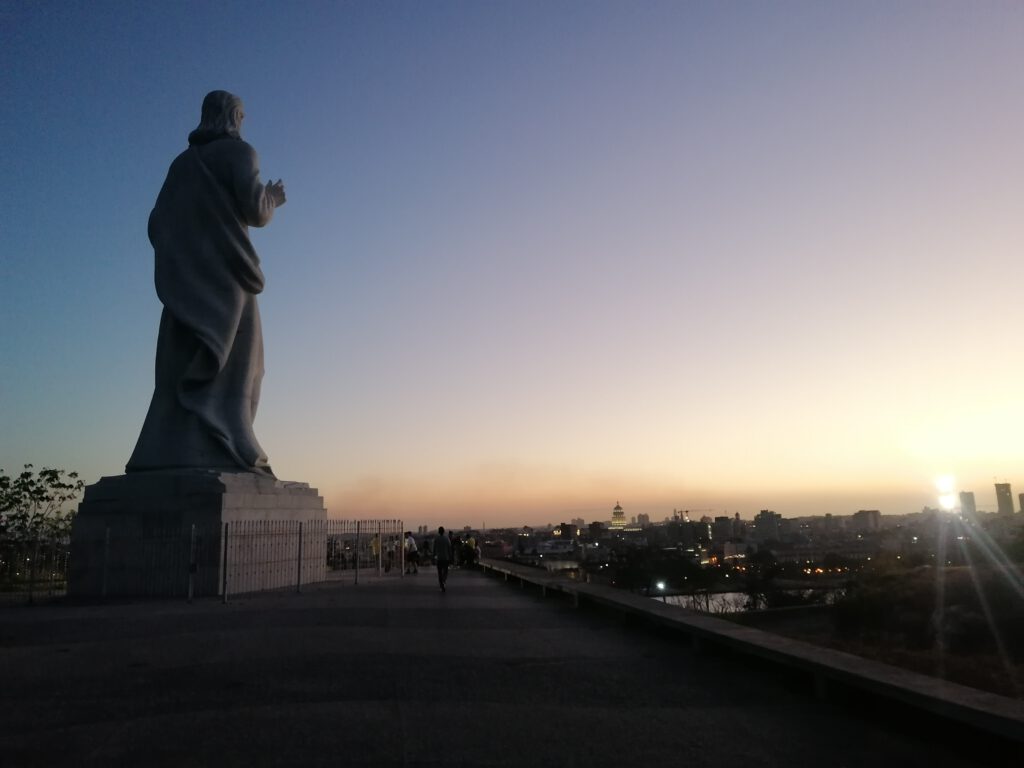
But contact with locals was not neglected in Havana either. Once again, Couchsurfing and my guitar gave me the opportunity to talk to many Cubans. The highlight was when a group of about 20 children listened to me. Of course, they were also very happy about the balloons I had brought with me from the Dom Rep and gave them afterwards.
Before the short time of 10 days in Cuba was already drawing to a close, there was one more absolute highlight:
With the travellers Kaelah, Arsenna and Mario, I visited the valley of Vinales, which on the one hand offers wonderful views of a unique mountain landscape with high but flat mountains and on the other hand is the home of Cuban tobacco, so we were able to visit a tobacco farm.
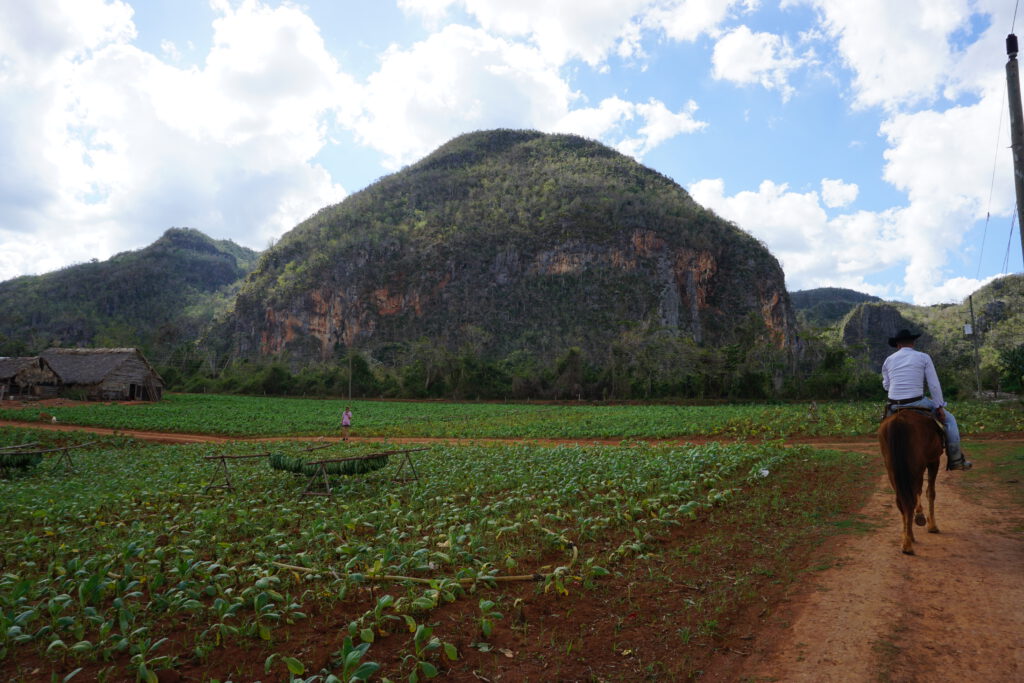
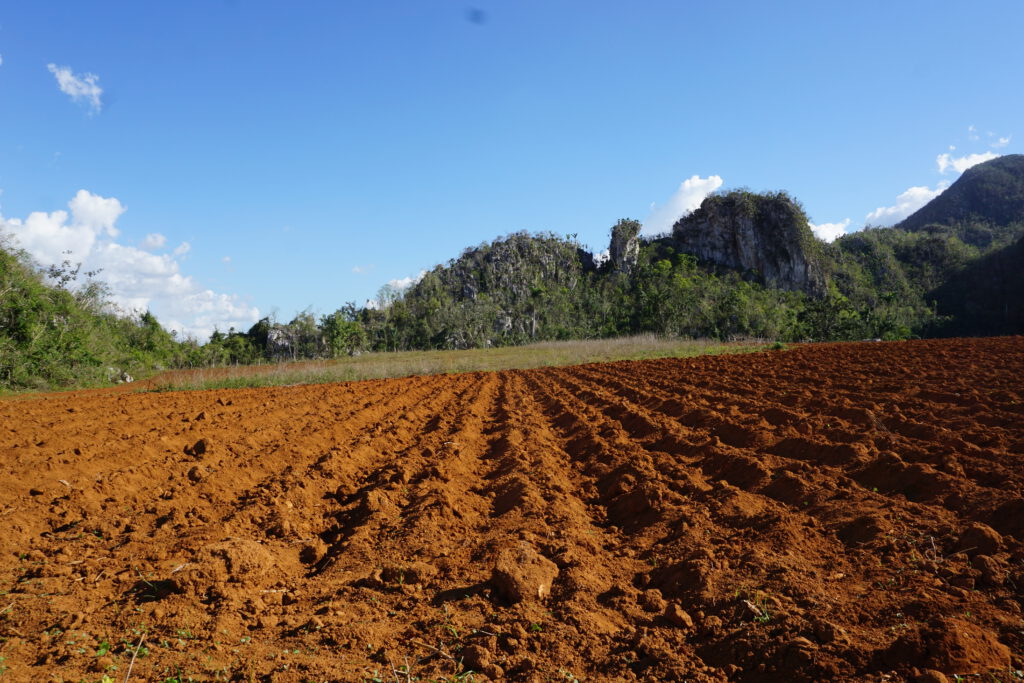
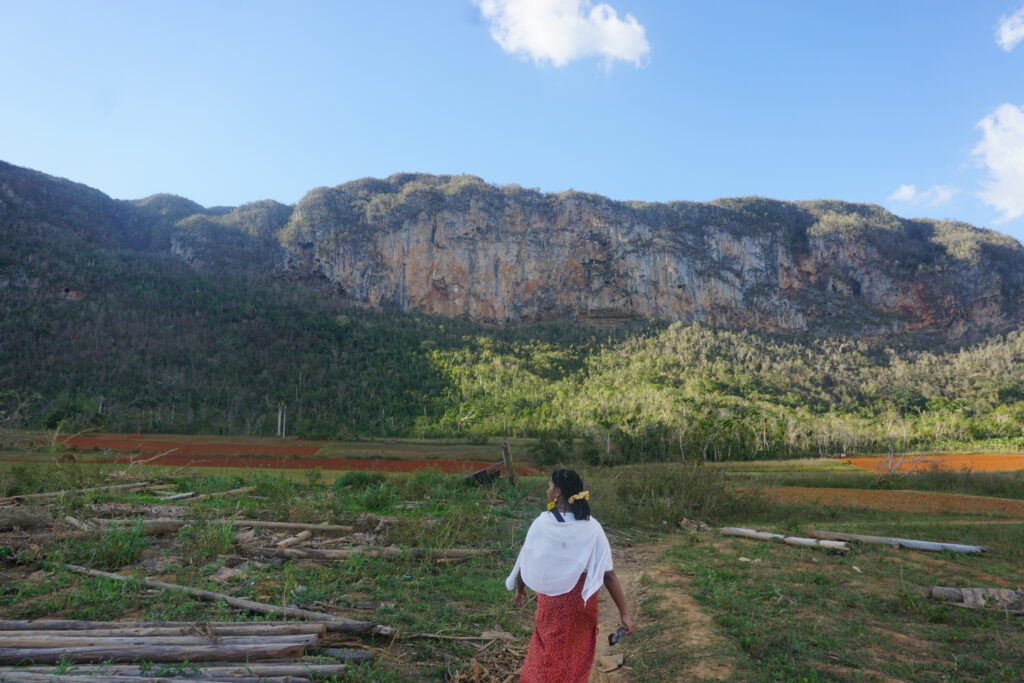
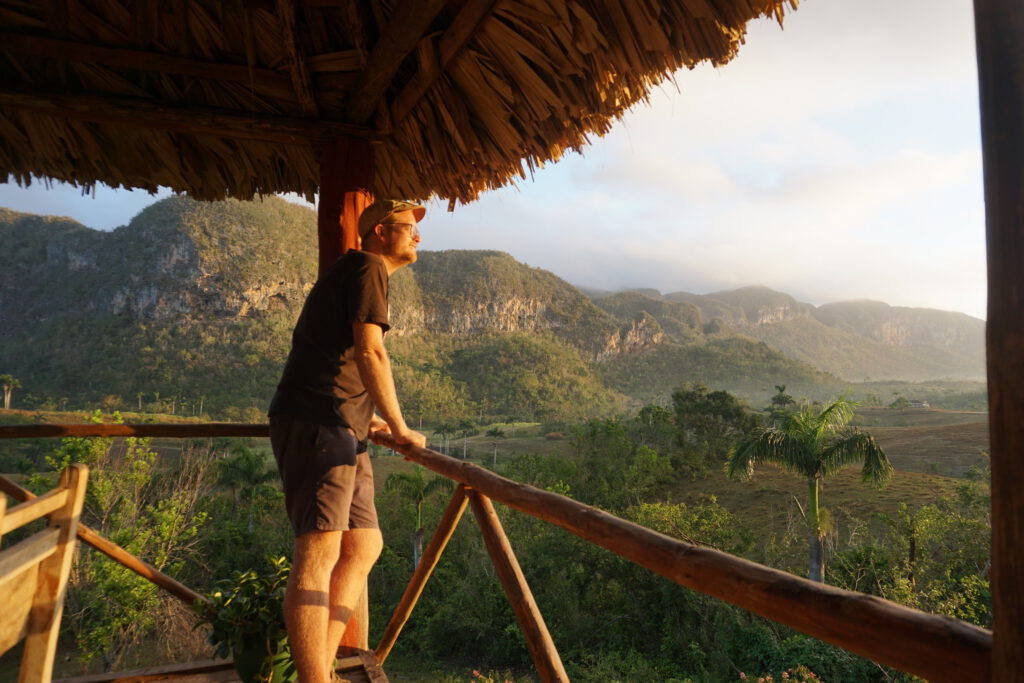
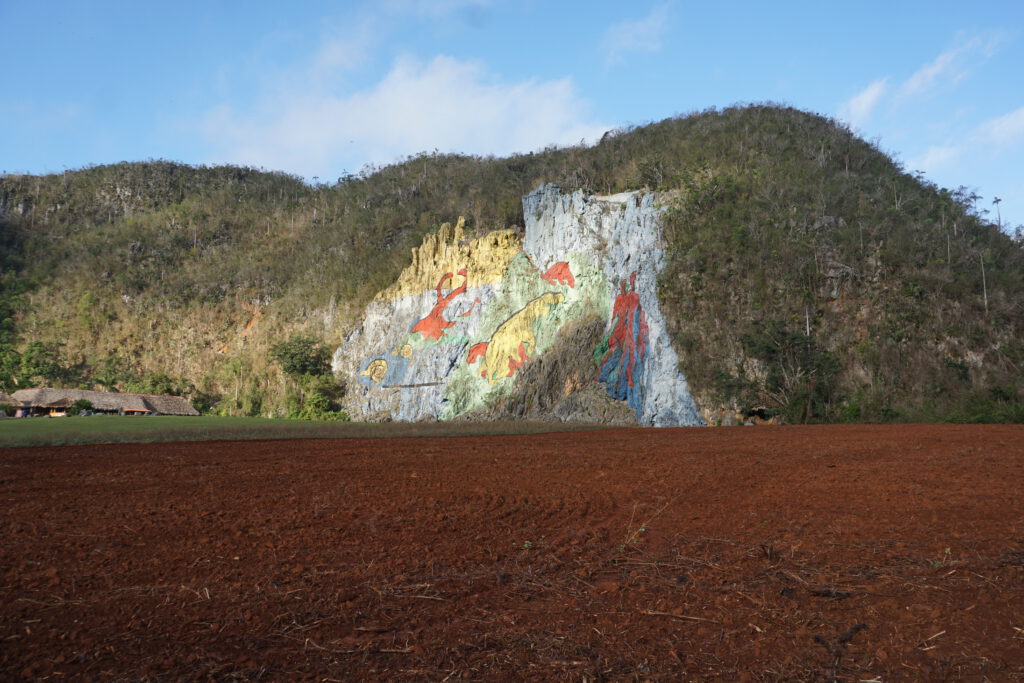
There we learned how and where Cuban cigars are made and learned that the tobacco farmers have to sell 90% of their harvest to the government at ridiculous prices. With the remaining 10%, they still earn more than they get from the government for the other 90. The dissatisfaction with the government is noticeable in every part of the country, as is the resignation: I only found out two days earlier from a friend from St. Maarten that parliamentary elections were taking place in Cuba.
When I asked my Cuban friends about it, they said that they don’t vote anyway because nothing changes. I then did some research and indeed there were exactly 470 candidates for the 470 seats in parliament. The candidates have to get more than 50% yes votes, but otherwise they are elected from the communist party, there is only one party in Cuba anyway. But I also found something positive during my research: Cuba has quotas for parliament and therefore more women than men and a large number of people of colour.
But how has this country developed? I would like to give a brief overview here. It is important for me to emphasise that while I write such history or politics digressions to the best of my knowledge and belief, I do not want this to be understood as a scholarly essay. I’m just trying to summarise what I learn from locals, tours and my own research so that you have a bit more background. However, if you want a more detailed history summary, there are many alternatives, one of which is the Netflix series “Secret Cuba”, which I am currently watching and highly recommend.
Excursion to Cuban history
But let’s get to Cuban history: the largest island in the Caribbean was discovered and conquered by the Spanish at a similar speed as the Dominican Republic, and due to its geographical location with the Dom Rep, it became the focal point for further conquests and slave trade during Spanish colonial rule in Latin America. And this despite the fact that the clear instruction of the Spanish crown had initially been that slave trade was forbidden. Columbus and Co disregarded this instruction from the beginning and oppressed the indigenous population that remained. Within a few years, 90% of the Cuban population had been wiped out – by the Spanish weapons and, above all, the diseases they had brought in. You may be familiar with this part from other countries and maybe even from other blog posts of mine. As on many other Caribbean islands, the Spanish needed labour to grow sugar cane and other goods and found it in African slaves. Over the next few centuries, slaves sometimes made up over 90% of the population. After the revolutionary slave uprising in Haiti in 1791, many slave drivers fled to Cuba and expanded sugar cane and coffee cultivation on the island, so that the island became richer and richer, especially in the 19th century. A wealth from which only a few obviously profited.
The discontent among the population was understandably enormous and there were many slave revolts, but all of them were unsuccessful.
Cuba was one of the last countries to become independent from Spain. And the revolution then actually started from a slave owner who felt disadvantaged in the east of the country. Carlos Manuel de Céspedes kicked off the revolution in 1868 with the “Grito de Yara”, but it was to last for 30 years. A story that particularly stuck in my mind from a guided tour in Havana tells that shortly after Céspedes proclaimed independence, the Spanish captured his only son and threatened to kill him if the revolution did not stop immediately. Céspedes is said to have replied that he saw himself not only as the father of his son but of all Cubans and that the revolution had to continue at all costs. The Spaniards then executed his son. It is also because of this story that Cubans call Cespedes the father of the homeland.
In 1878, Spain made some concessions to the Cubans, and the revolution came to a halt for the time being. After another unsuccessful attempt at independence under Antonio Maceo in 1879 – 1880, it took until 1895, under the leadership of the poet and journalist José Martí, for another attempt to achieve complete independence for Cuba. In 1898, when Spain was already talking publicly about withdrawing from Cuba, the USA interfered in the conflict, provoked the American-Spanish War and took control in Cuba. Now Cuba was independent from Spain, but the USA ruled instead.
Before allowing sham governments, the US secured the right to intervene militarily in Cuba at any time, which it did several times in the following years. They also secured the bays of Bahia Honda and Guantanamo, the second of which is still used militarily by the US today.
In the first decades of the 20th century, Cuba had a wide variety of governments that were influenced to varying degrees by the USA, but until the Cuban Revolution in 1959, the influence of the USA remained enormous. In particular, the two dictators Gerardo Machado and Fulgenio Batista were strongly supported by the USA in their election campaigns and when they took power, and in return granted them great influence in Cuba.
A young lawyer named Fidel Castro indicted Batista for his military coup in the Supreme Court of Cuba. After the case was dismissed, Castro declared that the right of resistance enshrined in the constitution, having exhausted all legal means, was now taking effect and prepared the revolution. On 26 July 1953, he and a guerrilla force carried out an attack on the Moncada barracks near Santiago de Cuba, which failed. After Castro had been imprisoned for two years, Batista had him pardoned because he feared the reactions of the population. Castro fled into exile in Mexico where he met Ernesto “Che” Guevara.
In December 1956, he returned to Cuba with Che Guevara and 82 guerrilla fighters and started the revolution from the east, which led to Batista’s overthrow in early 1959. Castro took power and ruled until 2008.
There are many theories as to why Fidel Castro and his people turned Cuba into a communist country. What is certain is that Castro was not originally a communist. I found a plausible theory from a guide that by breaking with the USA, which the revolutionaries wanted to do, he wanted to get closer to the other world power at the time – the Soviet Union – because he saw this as a way to stay in power for a long time. Whether or not this was the reason for communism in Cuba, it worked: Fidel Castro built a dictatorship in Cuba that also outlasted the disintegration of the Soviet Union. Since the Soviet Union saw Cuba as an important base in the immediate vicinity of the enemy, they supplied the country with everything it needed, which unfortunately also led to Cuba cutting back its production capacities for many products enormously – dependence on the Soviet Union was born and its collapse plunged Cuba into the first severe economic crisis I write about above. The second followed with Covid and the previously created dependence on communism. But that Cuba is only partly communist and socialist can also be seen from the fact that Castro and the country’s elites enriched themselves greatly from the wealth of the Soviet Union. Today, Castro’s sons and daughters are the richest people in the country.
It also fits into the image of the dictatorship that Fidel Castro was succeeded as president of Cuba by his brother Raúl in 2008. Miguel Diaz-Canel has been in power since 2018.
While the public image of Fidel Castro is that of a dictator, Che Guevara is still revered today and seen as a symbol of left-wing groups and revolution. His likeness can be found on countless T-shirts and in many other places. And there is no denying that his ideas were revolutionary. He wanted to bring about a revolution similar to the one in Cuba in Bolivia, but with less success.
But if you take a closer look at the person of Che Guevara and talk to Cubans, a different picture quickly emerges: that of a brutal murderer who mercilessly kills not only enemies but also friends who do not behave according to his ideas and who walks over dead bodies on both sides to get his way. A friend told me that his grandfather, who knew Che personally, always spoke highly of Che when he was sober and praised the revolution to the skies. But when he was given alcohol, he spoke the truth about what happened during the guerrilla period and talked about Che as a cruel person. The same friend, by the way, was tortured by the Cuban army a few years ago because he wanted to get out of the military service after 10 years.
After all I have heard and read about Che Guevara, I have become very sceptical about the public image of this person and doubt whether Che Guevara should be portrayed as a hero. However, I do not doubt that his likeness has served and can still serve as an important symbol for many a revolution.
And my impression is also that another revolution in Cuba – of whatever kind – is urgently needed. After all the conversations with the people, I think that they actually wish for it, but nobody dares. Probably also because many still have in mind what the last revolution led to in the end.

